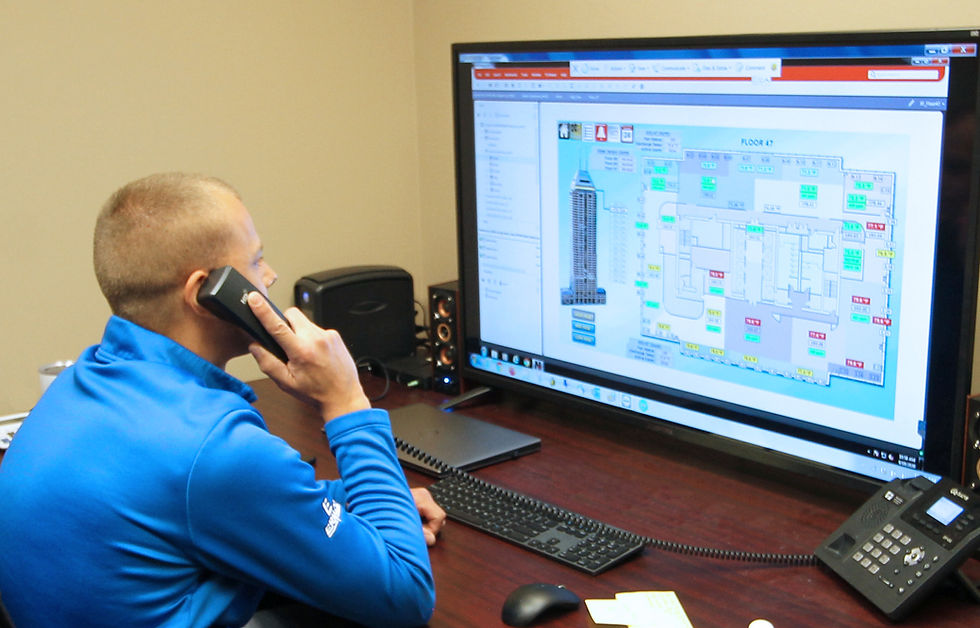The Logistics of Delivering a Successful Logistics Center
- mgilliam7
- May 10, 2022
- 3 min read
The demand for industrial space is at an all-time high, thanks to the exponential rise of e-commerce. Because consumers expect fast shipping and competitive pricing, logistics companies are focused on making their order fulfillment and distribution processes more efficient. Developers and construction managers are partnering with ERMCO to build facilities for logistics companies to optimize their supply chain strategies. But whether you’re building a warehouse or a distribution and fulfillment center, the process starts with preconstruction.
WHY PRECONSTRUCTION IS AN IMPORTANT PART OF THE PROCESS

Preconstruction may be the most important phase of the construction process. That’s when we learn about you and the end user and the project goals, challenges, and overall vision. You may want to build a 150,000-square-foot distribution center. Or your client may need a new warehouse, since they’ve outgrown the current one. Or, maybe, you want a 1,000,000-square-foot “flex building,” where your tenants can customize their space. Whatever type of industrial building a client needs, the preconstruction process hammers down the initial electrical design and makes sure everyone’s on the same page when it comes to goals and expectations. This is also the time to determine the project team, the most efficient electrical scope, the schedule, the budget, the materials needed for the building, and any necessary permits and inspections.
“We take the criteria of the owner’s wants and provide the best and most cost-effective solution,” says ERMCO Preconstruction Services Manager Drew Pojar, “We consider the possibility a client may want to expand. We want to provide the best set-up for them to upgrade or expand, so we take a closer look at how we lay out the branch wiring for example, to help with possible building divisions for future tenants.”
HOW WE DETERMINE WHAT YOUR BUILDING NEEDS
We want each of our clients to get the best building for their specific needs. To get an idea of what services will best fit your project, we ask questions, such as:
Do you want a general warehouse or a distribution and fulfillment center?
How many loading docks do you think you’ll need?
Do you know what inventory will be stored in the building? Does it need to be in a temperature-controlled room?
How much square footage do you want to dedicate to office space?
What types of tenants are you looking for?
Will there be any heavy manufacturing or light assembly in the building?
Do you think you’ll need medium voltage infrastructure?
Do you think you’ll need any multimedia or technology systems?
The answers determine how much square footage—and how many rooms/units—you need. It also helps determine how the end user will be able to use the space.

“We make sure clients have enough capacity, but don’t oversize systems, so they’re able to operate as efficiently as possible,” says Drew. He adds that some developers try to keep their industrial building(s) as minimal as possible so that, when a tenant comes in, the tenant can have control over what goes into the building. Other developers put in dock equipment and/or generic office space to get it tenant-ready.
THE PRECONSTRUCTION PROCESS
Preconstruction helps figure out how to efficiently build the space a client needs; it includes scheduling, budgeting, permitting, and more. During the process, we connect with the architects, engineers, subcontractors, and consultants to talk through the electrical systems, the building site, existing infrastructure, and any other conditions. Once our team understands what you want, we present schematic design drawings of what the electrical systems in your building will look like. In other words, we build a project twice—once in the virtual world, and a second time in the real world.
“Doing a thorough analysis of everything helps expedite the process,” says Drew. “And at the end of the day, the building just needs to be ready for a tenant to come in and customize it.”
For more information on how ERMCO can help with your logistics project, contact:




Comments